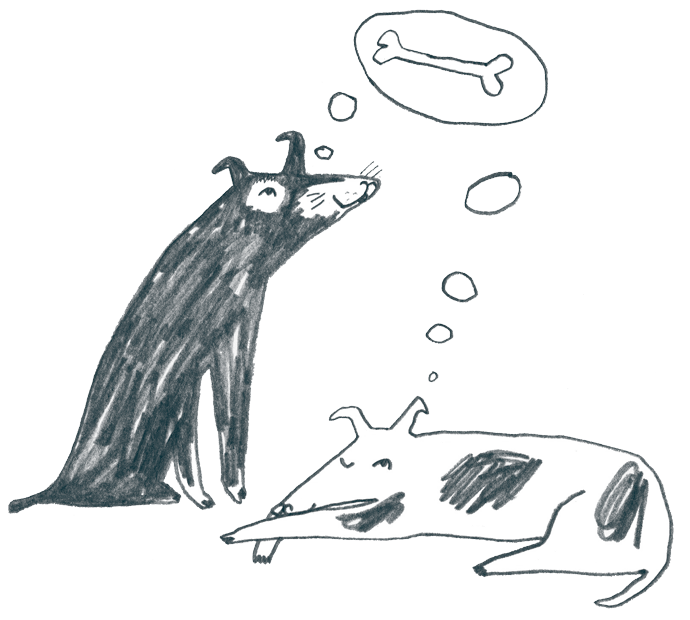Thoughts and conversation from our nomads.
Case Study: Trade Me Property
Guest post by: Zhi Lee, Trade Me Property Delivery Manager. We’re very thankful that Trade Me as an organisation allows employees to select teams and themes they’d like to work on, on a regular basis. It’s something we try to do twice a year in Trade Me Property. Now, it’s a huge leap of faith to ba...
Impact Mapping team objectives
I was asked to facilitate a session with a team of systems analysts who wanted to set their objectives for the next 6 months. This was a group of people who spent a large portion of their time embedded within project delivery teams. I wanted to use an approach that could address a number of question...
Squadify with Self-Selecting Teams
"No one had ever done this on the scale we were contemplating. Could it possibly work?" Fast growth has a way of forcing organizational change on a business, but it also presents opportunities to try new ways of working. When Trade Me, New Zealand’s biggest e-commerce provider, hit a new level of gr...
The importance of size and proximity
Process is expensive. Bigger teams, working from a distance, part time team members, and many specialists are all factors that lead to a more elaborate process. This might be obvious, but the more companies we get to know, the more we experience that this is something being ignored. This article is...
Happy New Year from Nomad8
Thank you for being part of our extended whanau, friends and partners this past year! We’ve had a hugely busy and exciting year and we thought we’d jump on the newsletter bandwagon and tell you about a few of the things we’ve been doing. Nomads Emigrate, Immigrate and MigrateIn February we moved our...
Yay, we published a book!
Our book "Creating Great Teams - How Self Selection Lets People Excel" was published with Pragmatic Bookshelf last week. Yesterday, the first paper copies arrived. A picture of the calm and collected authors (David Mole and me). So, what's the book about? And why should you read it? Here's a brief...
Key Questions Retrospective Technique
New Agile teams tend to place a significant emphasis on the retrospective meeting. When an issue rears it’s head, they often say “we need to talk about that in the retrospective” rather than deal with it there and then. The problem facing teams who do this is that having placed a lot of emphasis on...
Finding it hard to visualise improvement ideas?… Try idea balloons!
Are you tired of capturing ideas and experiments that come out of your retrospectives only to forget about them after a couple of days? Do your improvement ideas get lost in waves of sticky-notes and hand drawn diagrams? Try idea balloons! Idea balloons are a way of keeping your ideas and agreements...
Benchmarking performance across organisations
A problem we were facing recently was that our teams perceived their own progress as not being fast enough and were developing a sense that they were not performing well. Sometimes it is useful to know how productive we are as an organisation and how our teams compare to teams in other companies. A...
Case Study: MYOB
Self-selection helps Agile teams pick themselves. And it’s spreading: Since we shared our Self-Selection kit in May 2014 we have heard about successful Self-Selection events from companies from all over the world. Read our interview with MYOB’s Simon Bristow and Alex Barreto, and find out how they m...
The Rathole Facilitation Technique
Urban dictionary: rat-hole To digress in an extensive way. To divert the conversation to a topic that is not only unrelated to the topic at hand, but a topic that will likely have no immediate resolution either. As a facilitator of a group discussion, a conversation or a workshop session it is impor...
How to Measure Work Happiness
Recently, someone from the small but perfectly shaped nation of Iceland asked me the following question: “When watching your InfoQ talk on portfolio Kanban I noticed that you talked about measuring autonomy, mastery, and purpose as they are defined by Daniel Pink. I have been searching the web for a...
How to Run a Sprint Planning Meeting (the Way I Like It)
This is a sample agenda for a sprint planning meeting. Depending on your context you will have to change the details, just make sure the outcomes stay the same. Meeting purpose: Plan and prepare for the upcoming sprint Meeting duration: ca. 1 hour for a 2 week sprint (it will be less if you’re an ex...
Case Study: Australia Post
Inspired by our squadification event, Australia Post set out to try self-selection for themselves. 60 people were asked to figure out who should be in which team and choose who they wanted to work with. Read our interview with Andy Kelk, Australia Post's Head of Technology for Digital Mailbox, who m...
Deep tissue massage retrospective
Even with high performing teams sometimes there are common themes coming up again and again in each retrospective. Much like a tight spot in a muscle that keeps lingering around (until we get a good massage) those issues keep coming back until we pay them enough attention to make them disappear. Use...
Profiling what motivates a team
I recently worked with a team of content writers, where we had introduced Kanban to help with the flow and consistency of delivery. The cycle time of work had reduced, but it was still high and as a team they seemed a little flat. They knew ‘what’ they were doing as individuals, but not the context...

